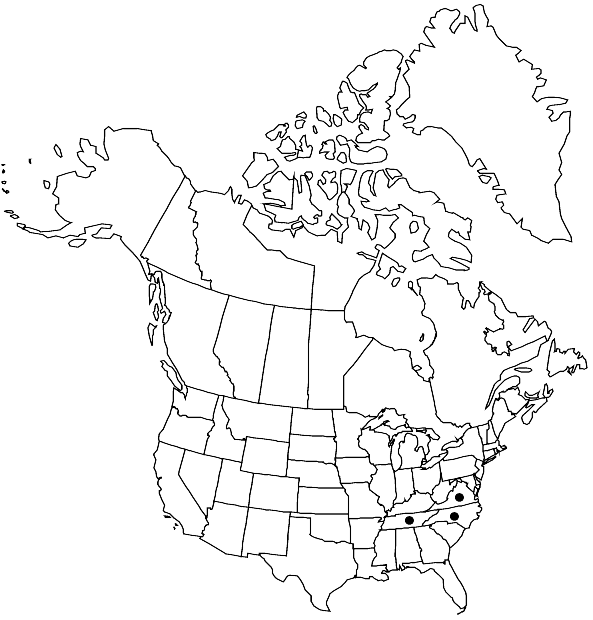Syntrichia amphidiacea
Bull. Buffalo Soc. Nat. Sci. 32: 267. 1993,.
Stems 2–15(–25) mm. Leaves infolded, twisted, and only slightly contorted when dry, erect-spreading when moist, variable in shape and size, narrowly or broadly spatulate, (1.5–)2–3(–4) × 0.75–1.5 mm; margins revolute in the proximal 1/2–3/4, entire; apices acute to acuminate; costa ending a few cells before the apex or percurrent, yellow or brown, smooth; basal cells abruptly differentiated, narrower toward the margins; distal cells rounded, polygonal, or quadrate, 11–14 µm (or slightly elongate and 13–22 µm), with 3–6 low or high papillae per cell, thick-walled and collenchymatous; marginal cells in several rows smaller and smoother with thicker, often colored walls. Specialized asexual reproduction as gemmae on the adaxial or occasionally the abaxial leaf surface of leaves, cylindric, rounded at the ends, up to 50 (rarely 200) µm, brown when mature, multicellular. Sexual condition dioicous. [Seta red, 6–8(–10) mm. Capsule red, 2–3(–3.5) mm, straight or slightly curved, with a distinct neck; operculum 1–1.5 mm; peristome 0.5–1 mm, basal membrane 1/6–1/5 the total length, teeth irregularly twisted and contorted (crumpled) when dry, widely spreading or reflexed when moist, red. Spores 18–22 µm, strongly papillose.]
Habitat: Bark of trees, logs, acidic and basic rocks, occasionally soil
Elevation: low to high elevations (0–3000 m)
Distribution

N.C., Tenn., Va., Mexico, Central America, n South America.
Discussion
The peristome of Syntrichia amphidiacea is unusual, being irregularly twisted and crumpled when dry but widely spreading or reflexed when moist. The species has a distribution disjunct between the southern Appalachians and Mexico, similar to that of a number of other mosses (including S. fragilis) and flowering plants that appear to be relicts of an ancient tropical flora. Sporophytes are known only from southern Mexico and southwards. Syntrichia amphidiacea is a rare species in the southeastern United States but common in Mexico.
Selected References
None.